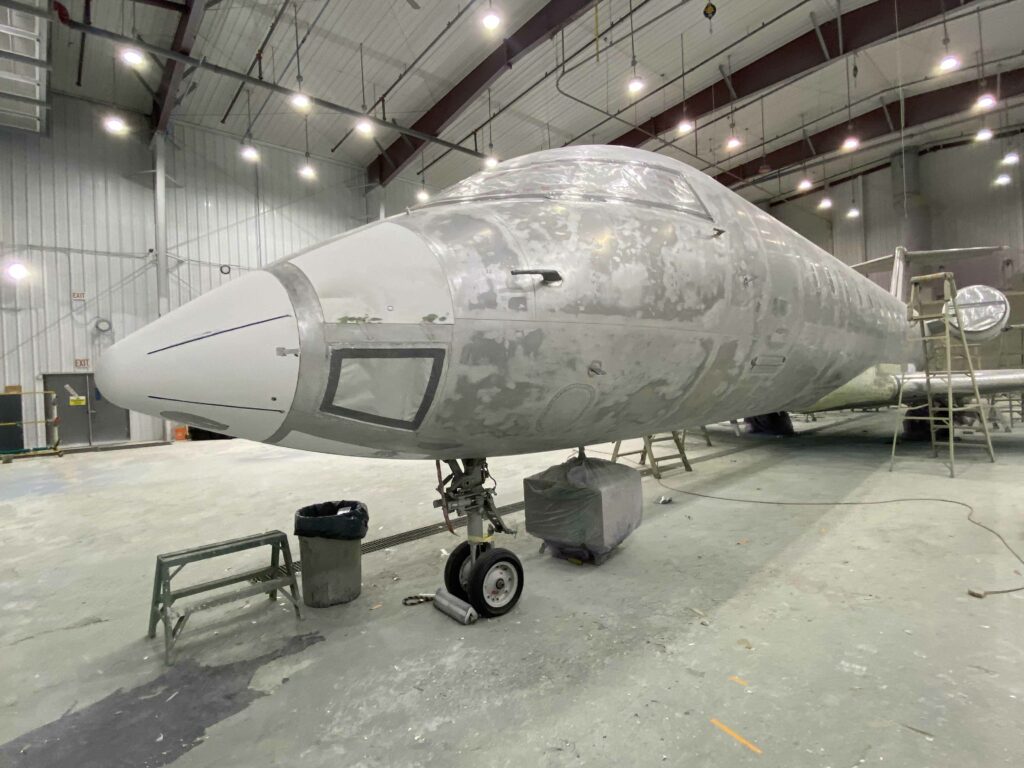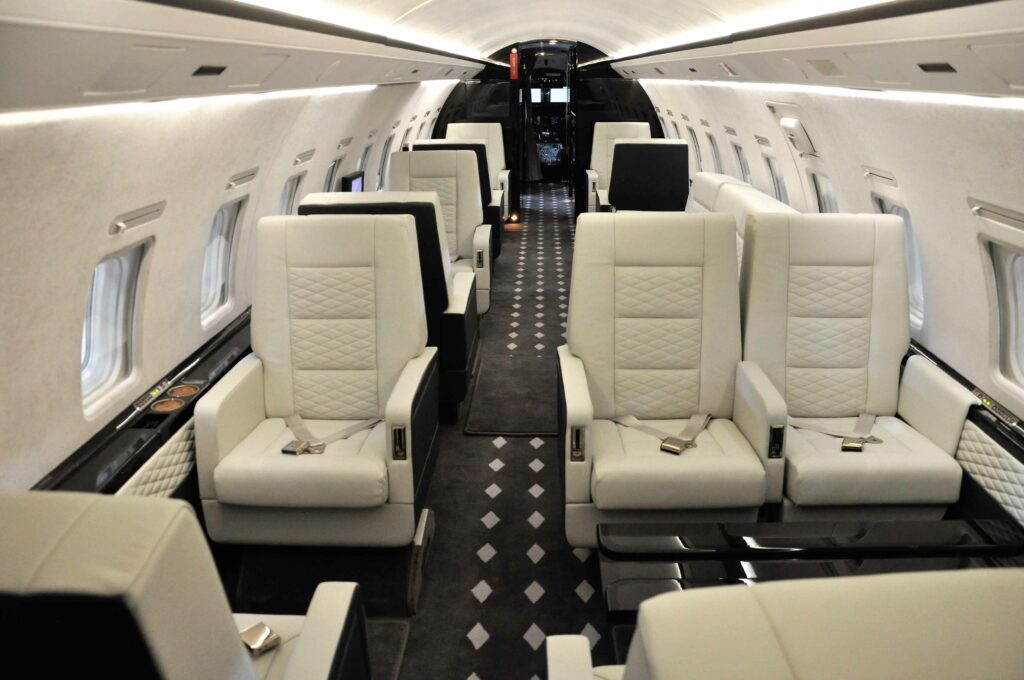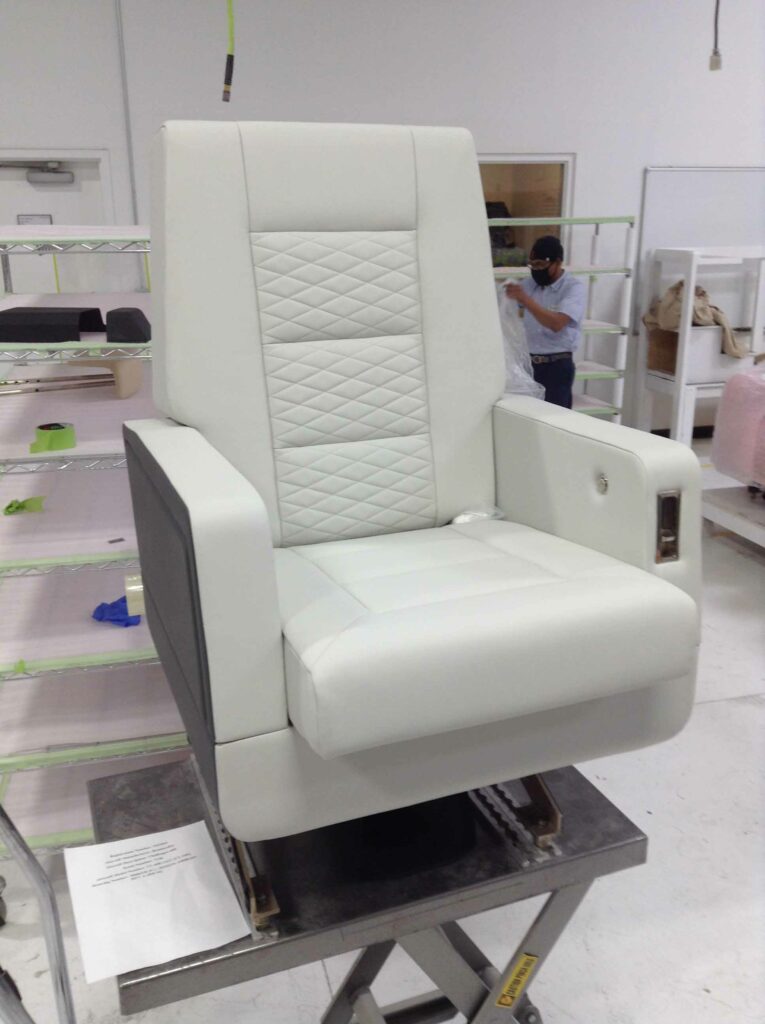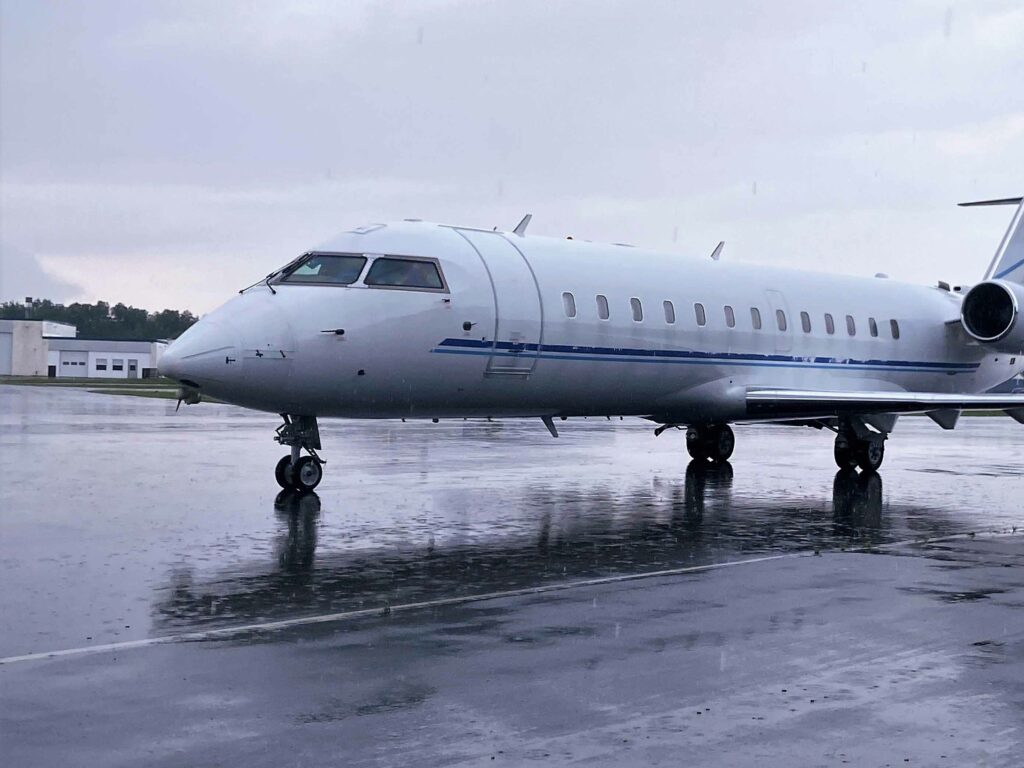Estimated reading time 12 minutes, 27 seconds.
Flying Colours Corp. is an international aviation services company that specializes in comprehensive maintenance, repair and overhaul (MRO) services; completions; refurbishments; special mission modifications; avionics upgrades and installations; exterior paintwork; and aircraft transaction support. The company has facilities in Peterborough, Ontario; St. Louis, Missouri; and Seletar, Singapore.
Recently, Flying Colours wrapped up an interior refurbishment of a 20-year-old Bombardier Challenger 850, giving the aging aircraft a completely new and modern look.
The company sat down with Skies to share details about the refurbishment process — and why it’s relevant to the current business aviation climate — in this exclusive Q&A.
Skies: What was the Challenger 850 owner looking for in terms of a refurbishment?
Flying Colours: The owner, based in the U.S., wanted to breathe new life into a dated, tired cabin within a specific budget. So Flying Colours worked with the charter operator to create a new look that delivered an updated interior without completely refurbishing. This helped manage the budget allocated.
We repaired and touched up carbon fiber monuments where necessary and reinstalled the lavatory seat, vanity seat, and baggage door. The central part of the project focused on refurbishing the seats, dado rails, and the carpet. The work was conducted while a 96-month maintenance check was in progress.
(We find owners often use maintenance downtime to make interior changes.) We were also asked to install the Gogo Avance L3 connectivity system to keep passengers productive and entertained.

The goal was to craft a stunning interior with a unique style that was durable enough to support regular charter operations. We complemented the interior with an amazing paint job on the fuselage.
Skies: How did Flying Colours approach the subject?
F.C: We always approach a refurbishment process by exploring the customer’s needs to make sure that what they require meets what is possible, and their budget. In this case, the customer came to us with a 20-year-old aircraft that needed transforming into an as-new model.
To make this happen, we worked with the client to discuss mission needs — where, when, how many people, and how regularly the aircraft will fly — and then began to define what kind of interior would not only look good, but function well.
We were already familiar with this airframe; we know Bombardier aircraft very well. We have worked on CL850s for decades, so we were immediately able to bring the right technical skills and imagination to the project. We liaised across our maintenance, cabinetry, upholstery, avionics upgrades, and paint departments at our Peterborough headquarters to make sure that the whole project aligned.
And the nice thing is that all the work is completed at a single location, which is great for our customers since it reduces the aircraft downtime — that is essential when you are a charter operator.
Skies: Describe the intricacies and complexities of the design.
F.C: The final design was a contemporary look that made the most of a black, white, and grey palette. The seats were the primary component that underwent a significant change. In total, 12 seats — four in club format, and a three-seat divan — were completely stripped back and refurbished. The original upholstery was a heavy, dark brown leather that was very distressed, and the seat style was also dated. They really did need a lot of work. We also removed the existing flooring and replaced it with a custom, hand-made carpet.
The interior style looks simple, but in reality, it was an extremely complex design. Detailed calculations had to be made numerous times to check for accuracy and design continuity before we started the refurbishment. We had to make sure that the diamonds on the seats, the lower dado panels, the divan, and the carpet all worked together in harmony.
We started with the seat and panel diamonds, then moved to the carpet. The space between the diamonds, the size of the diamonds, and the diamonds’ location on the floor had to work in concert with the seats. It may seem obvious, but it required great care and attention to detail to create a seamless look. A single diamond out of place would leap out at you.
To make things more challenging, the monuments and side panels of the interior are carbon fiber veneers, which can crack and break easily. Fortunately, we regularly work with carbon fiber. It’s a difficult material, but our experience made the process of removing and reinstalling the seats trouble-free.
Skies: What was the timeline for the project?
F.C: The interior project took around four months to complete.
Skies: Why is an aircraft refurbishment so important to consider in the current business aviation climate?
F.C: The high demand for business aircraft is leading to competition for new aircraft, but only so many a year can be produced. We are also seeing some of the lowest global pre-owned inventory numbers in years, so it is difficult to source used or new aircraft.
If an owner already has an asset that meets mission requirements, it can be much quicker, more cost-effective, and overall easier to keep that airframe and have it upgraded — rather than wait for a new or pre-owned aircraft that meets specific needs. A well-completed refurbishment makes financial sense as it helps maintain the value of the airframe.
A real bonus is that the aircraft can be designed to meet the customer’s vision. We’ve created contemporary, luxury interiors; more functional corporate shuttles that use durable materials to support high flight hours; cabins that reflect a brand and lifestyle; and multi-mission interiors — for example, medevac combined with VIP configuration.
Also, with future NextGen mandates on the horizon, older aircraft can benefit from having updated connectivity installed to meet those needs and support productivity.
Skies: What do owners/operators need to consider when refurbishing their aircraft?
F.C: Refurbishment gives customers so many options. The discussion doesn’t necessarily start with the airframe, but should focus on what the customer needs to do with the aircraft and how they can achieve that goal within the budget and timeframe.
Key points to consider are frequency of flights, average passenger load, stowage requirements, routes, range, operating environment (like hot and high), and airport destinations. Inflight activity is a factor, too; the refurbishment will be dramatically different for a charter company — which will probably require durable materials — compared to a private owner who uses the aircraft for business and flying with family and friends. Long-range aircraft will also need to support sleep, relaxation, and productivity. Lastly, we suggest owners look to future mandates that are being introduced and equip their aircraft as early as possible to meet those needs.
There will likely be personal preferences and branding — all of which will factor in a refurbishment design. But at the end of the day, we have to manage expectations; some owners will request concepts that are just not possible within aviation regulations. We will always try to realize a vision, but sometimes it just doesn’t make sense.
Skies: What should owners/operators look for when selecting an MRO?
F.C: It is worth doing your homework when selecting an MRO. You’ll want an MRO that is professionally managed to ensure your project finishes on time and within budget. How they respond to your request will indicate whether this is the case. A professionally run MRO will go through an extensive discovery process before proceeding with the refurbishment.
A good MRO will listen to your needs, make good suggestions, and likely have good relationships with the necessary supplier contacts. Right now, while the supply chain is challenged, that’s essential. We are lucky that our facility can manufacture much of what is needed, so we don’t always need to wait for parts.
It is also worth checking whether an MRO is an Authorized Service Facility (ASF) for your aircraft type. The ASF status means the OEM has confirmed that the MRO’s work process, procedures, and operating philosophy mirror theirs. Flying Colours is a Bombardier ASF, for example. Having this stamp of approval shows that a company has invested in training, facilities, and operations to ensure that the work will be performed to OEM standards.

Most importantly, you must trust that your MRO is doing what’s best for your aircraft. A good MRO is willing to share updates and images of the work in progress, welcomes customer visits throughout the refurbishment process, and proactively provides information. If you constantly have to seek information, you probably need to rethink.










Great article.
Wonder what the budget was?